I PLANTED MY FIRST SEED
My Plant Stalled
Growing tomato plants from seed is fun, interesting, and, of course, useful. Perhaps even more fun and interesting is growing a tree from seed. And then you also get a perspective in a potentially long span of time, and a chance to reflect on your place in that spectrum.
I planted my first tree seed many, many years ago, when I had just dipped my toes into the wide ocean of gardening. I was living in a small apartment and, having just finished eating a McIntosh apple, took a look at what was left. A core and seeds. I removed one seed from the core and buried it an inch deep in a 6-inch diameter flower pot, then gave it a drink and moved it to a sunny window.
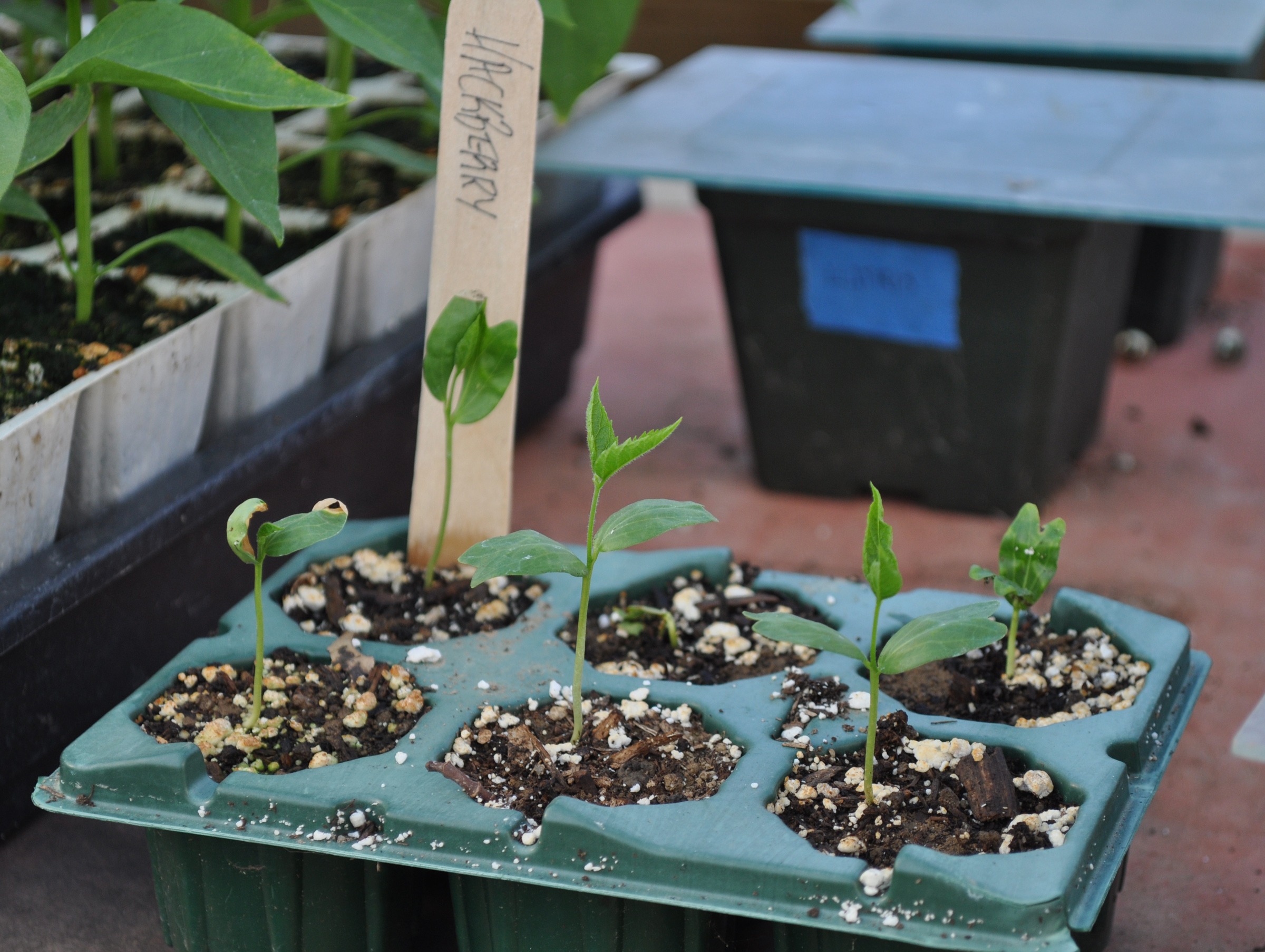
Not my first apple seedlings, but my hackberry seedlings in 2013
To my delight, the seed actually sprouted and grew to a few inches height. My vision of an old apple tree sometime offering me bushels of fruit stalled when growth of the seedling also stalled, still at a few inches height. And stayed there.
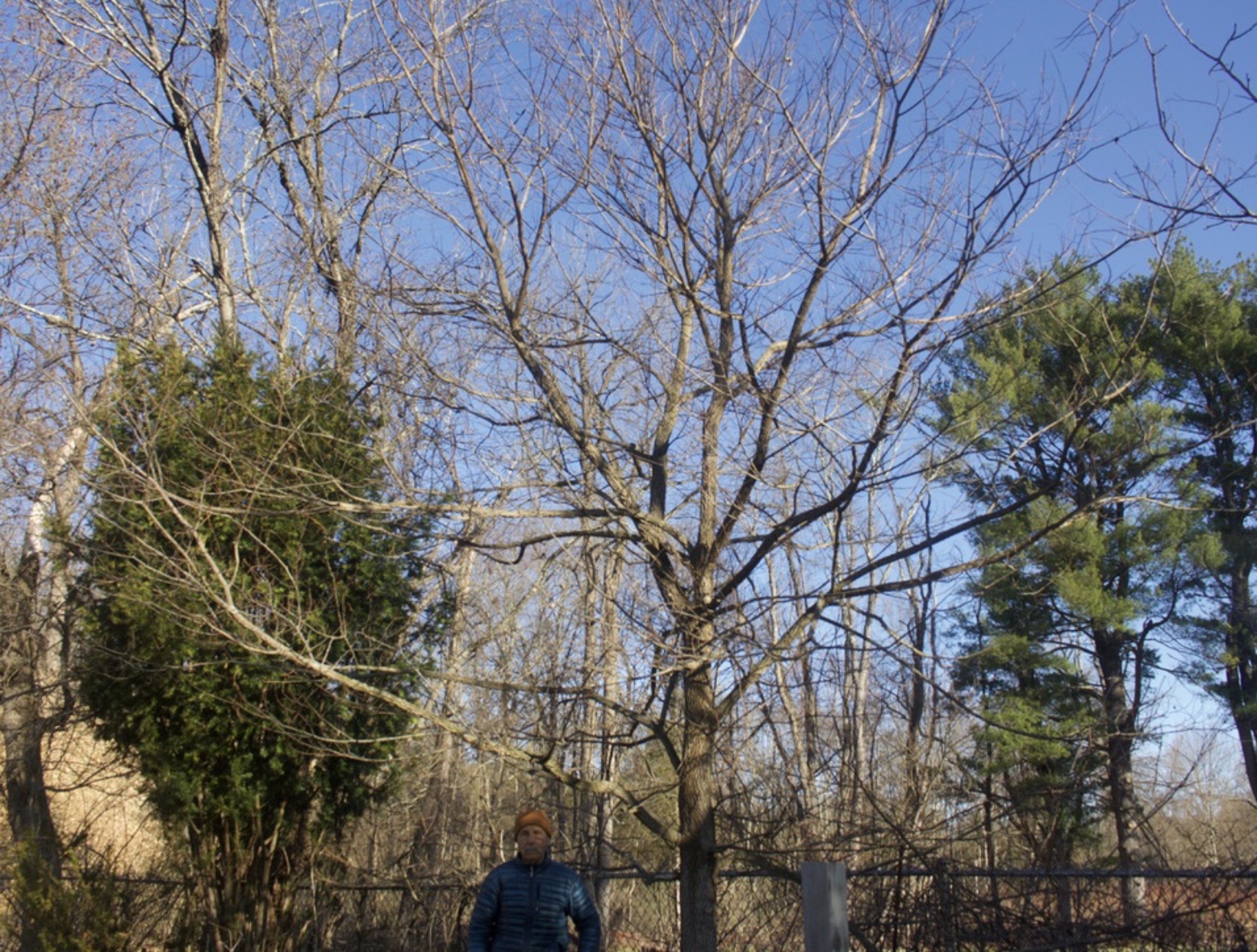
My hackberry tree in 2025
Actually, I was lucky enough that the seed sprouted because apple seeds, like many seeds that ripen in late summer and fall, needs stratification — a period of cool temperatures — before they will sprout. It makes sense. A late summer or fall ripening seed that sprouted as soon as it hit the ground would still be young and tender when weather turned cold enough to snuff it out.
If I had known this arboreal cleverness back when I planted the seed, I could have fooled it by putting the pot, with the seed planted, in the refrigerator for a couple of months. Or just left it outdoors.
Since that stalled start, I’ve successfully grown many trees, mostly from seeds I collected. My most recent babies are five dawn redwood (Metasequoia glyptostroboides, say it slowly, it’s fun), now in their second season.
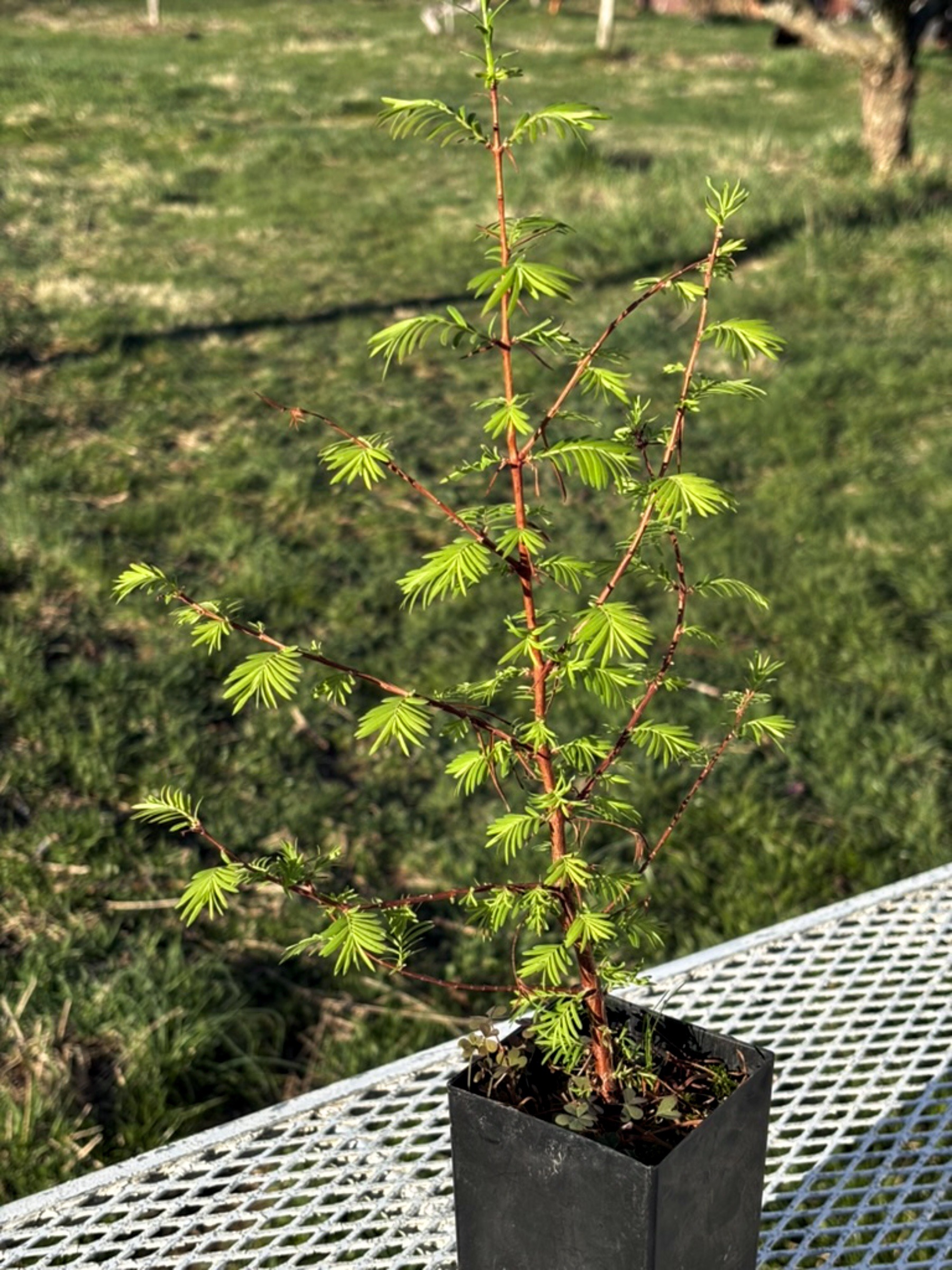
Dawn redwood seedling, 2nd year
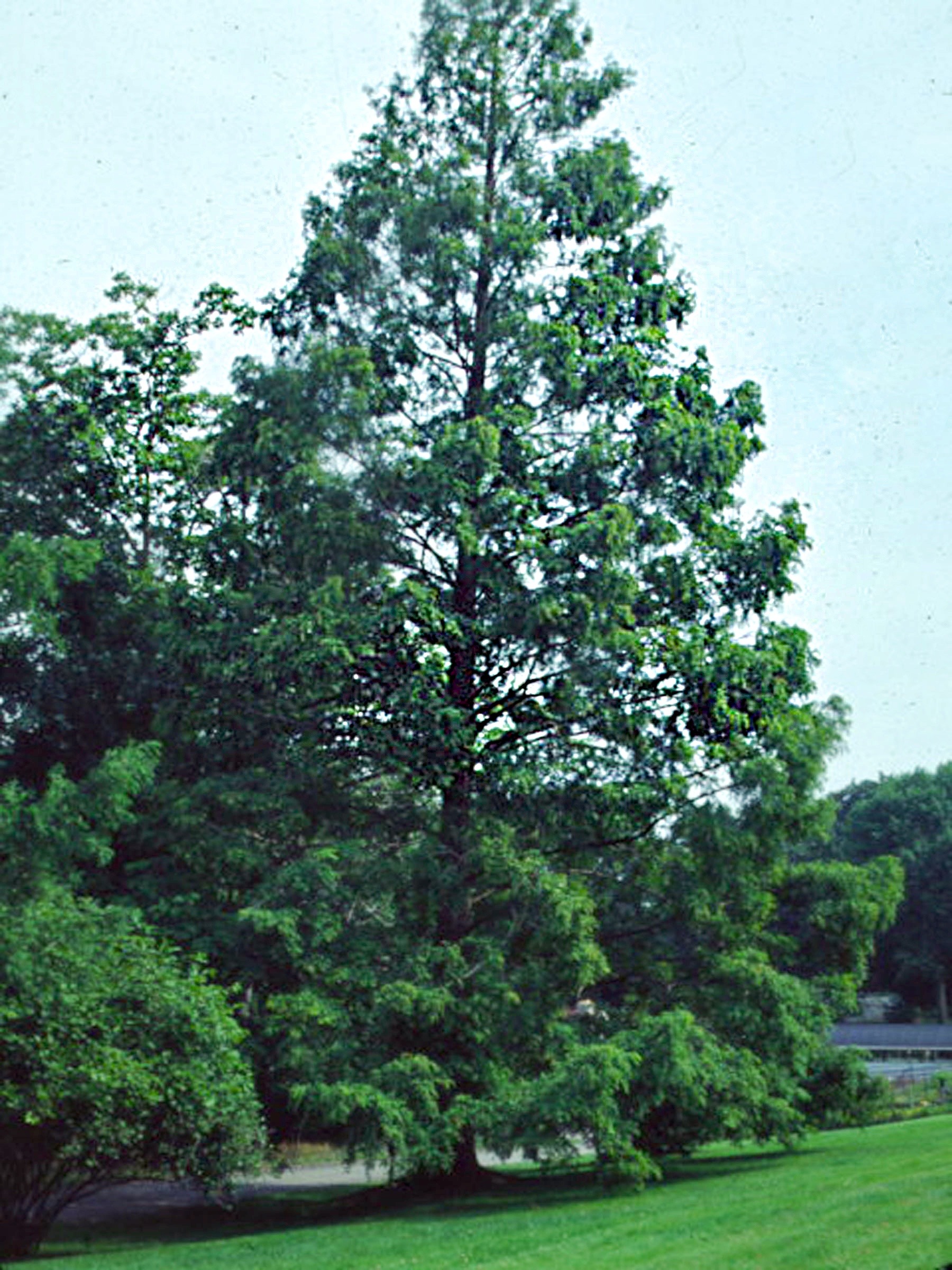
Here’s what my dawn redwood will look like when it grows up
Smart Seeds
Note that I wrote that stratification involves keeping the seed cool. Not cold. And moist. Ideal temperatures for stratification are between 32 and 45 degrees Fahrenheit. The amount of time required varies by plant and variety, but often is about two months. That chilling requirement is like a bank account, not filled until a requisite amount of cool temperatures is experienced. Outdoors around here, in the Northeast, some deposits are made into that chilling bank in fall, and then its finally filled in late winter, at which points seeds await warm enough weather to sprout.
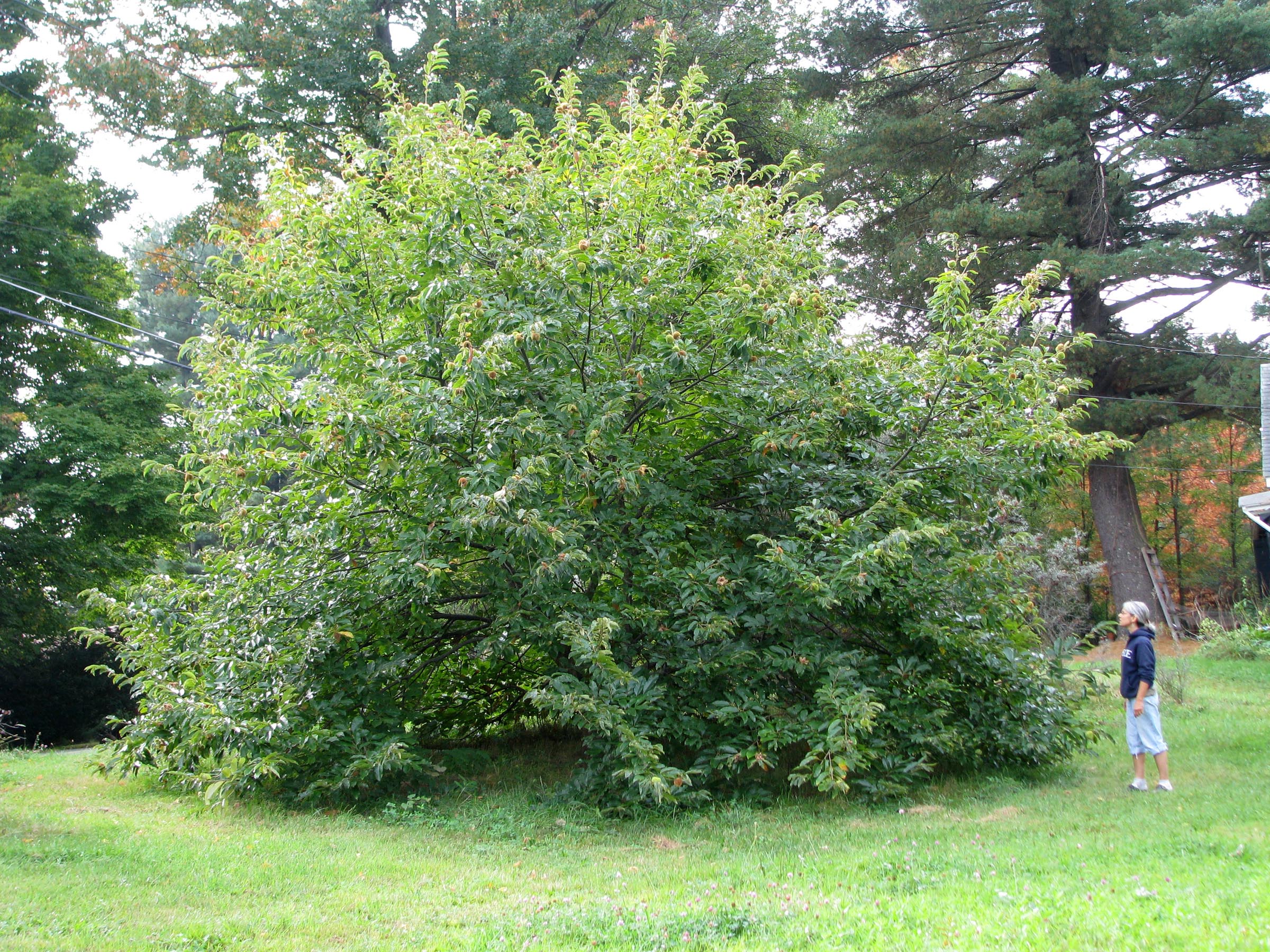
My chestnut, at 9 years old
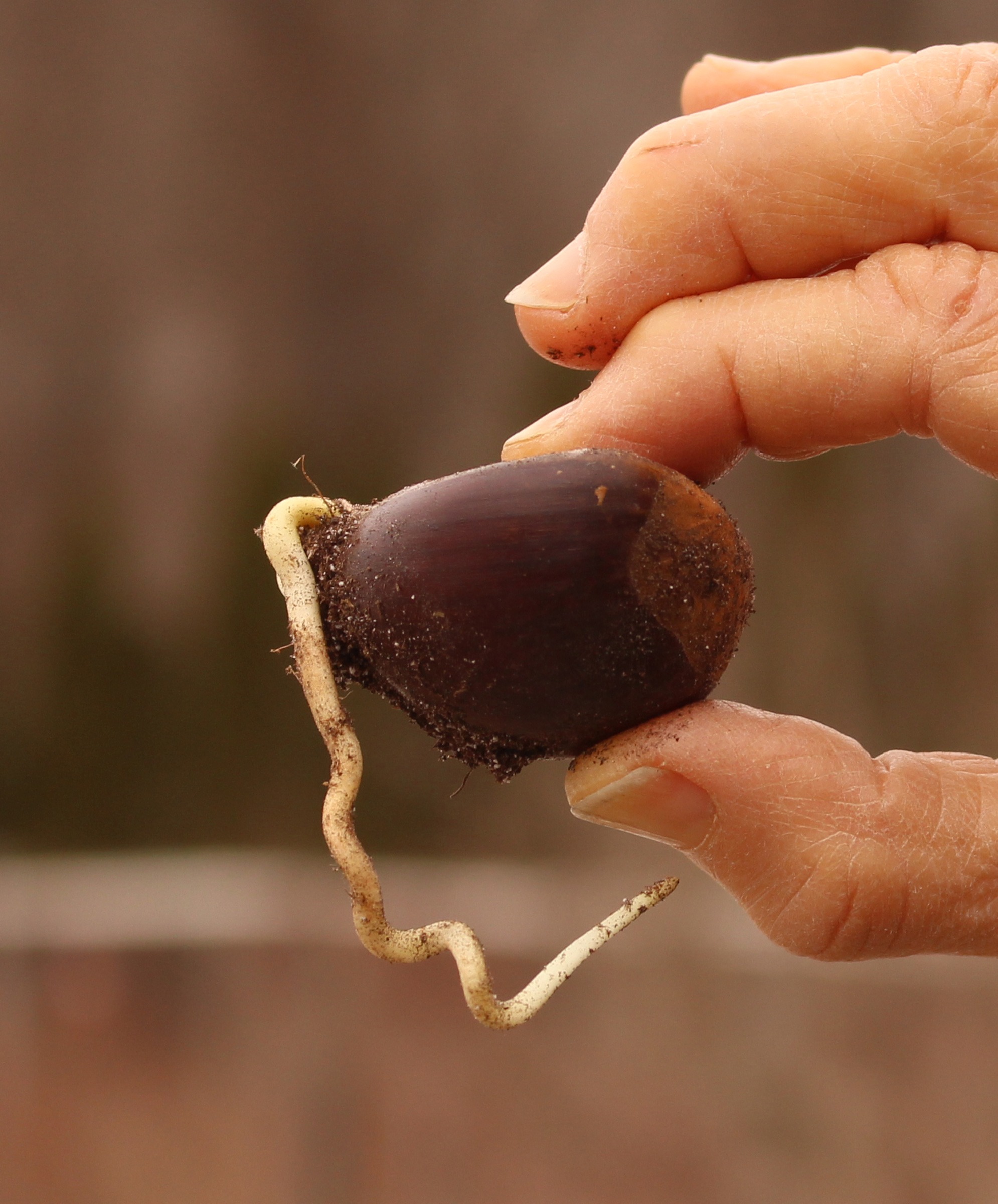
All from a seed like this sprouting one
Nowadays, I stratify seeds by putting them into a plastic bag with some moist potting mix. I typically wait for the chilling bank to show that it’s satisfied when — all of a sudden, as if a switch has been thrown — there’s now a bagful of white roots starting to grow from each seed. 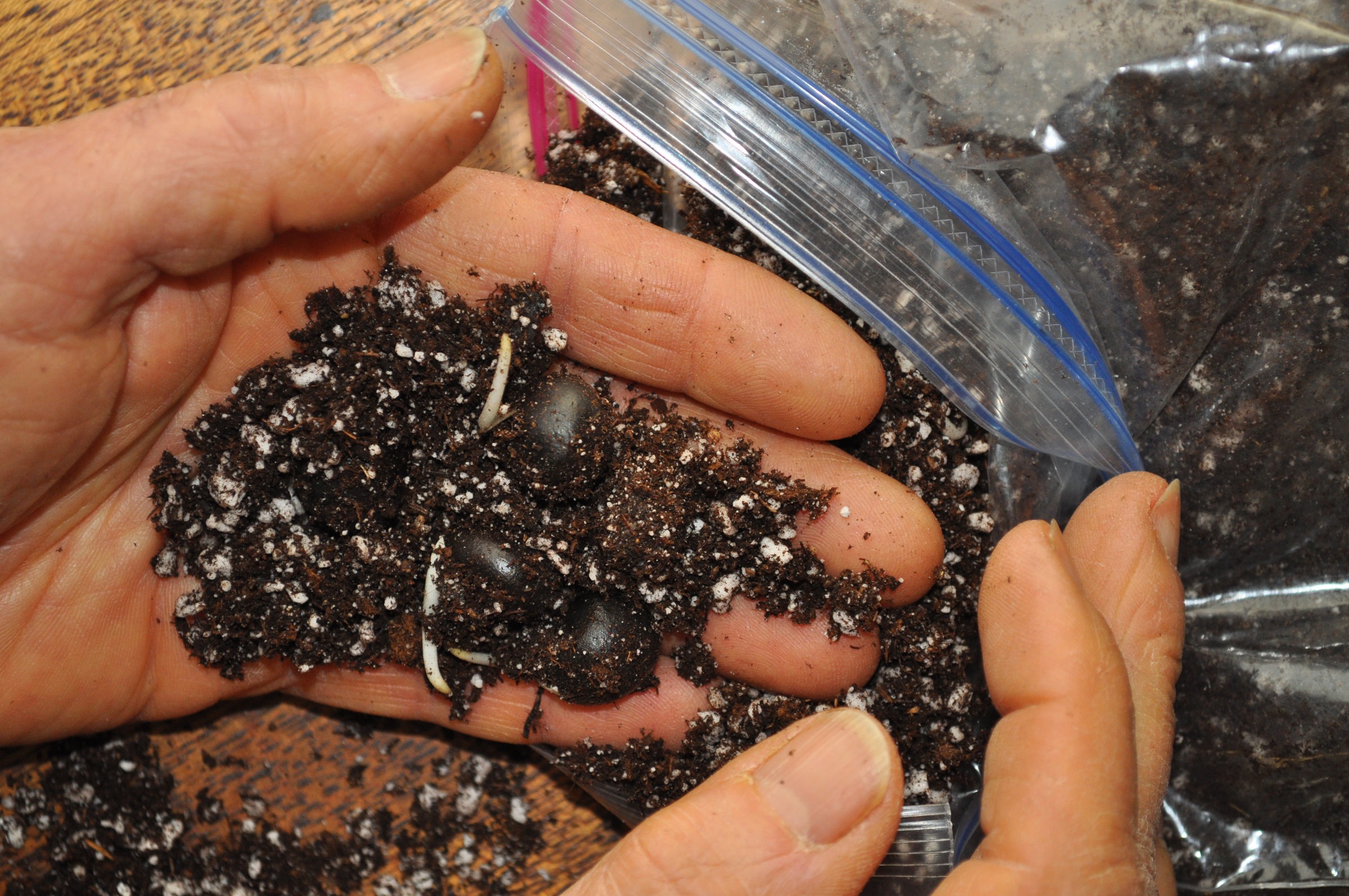 At that point, before roots get too long, I’ll dibble holes in pots of potting mix, then gently lift each seed from the the plastic bag and drop it into a waiting hole. With the soil firmed and watered, the seeds are ready to grow.
At that point, before roots get too long, I’ll dibble holes in pots of potting mix, then gently lift each seed from the the plastic bag and drop it into a waiting hole. With the soil firmed and watered, the seeds are ready to grow.
Of course plant sprouting isn’t always that simple. Some seeds, such as those of locust and redbud, have hard, impermeable seed coats; nothing happens until water gets inside. In nature, microorganism, insects, and the digestive tracts of birds and other animals soften and degrade those seed coats. I do it myself (not be eating the seed, etc.) but by filing a small, shallow cut through each seed’ s coat.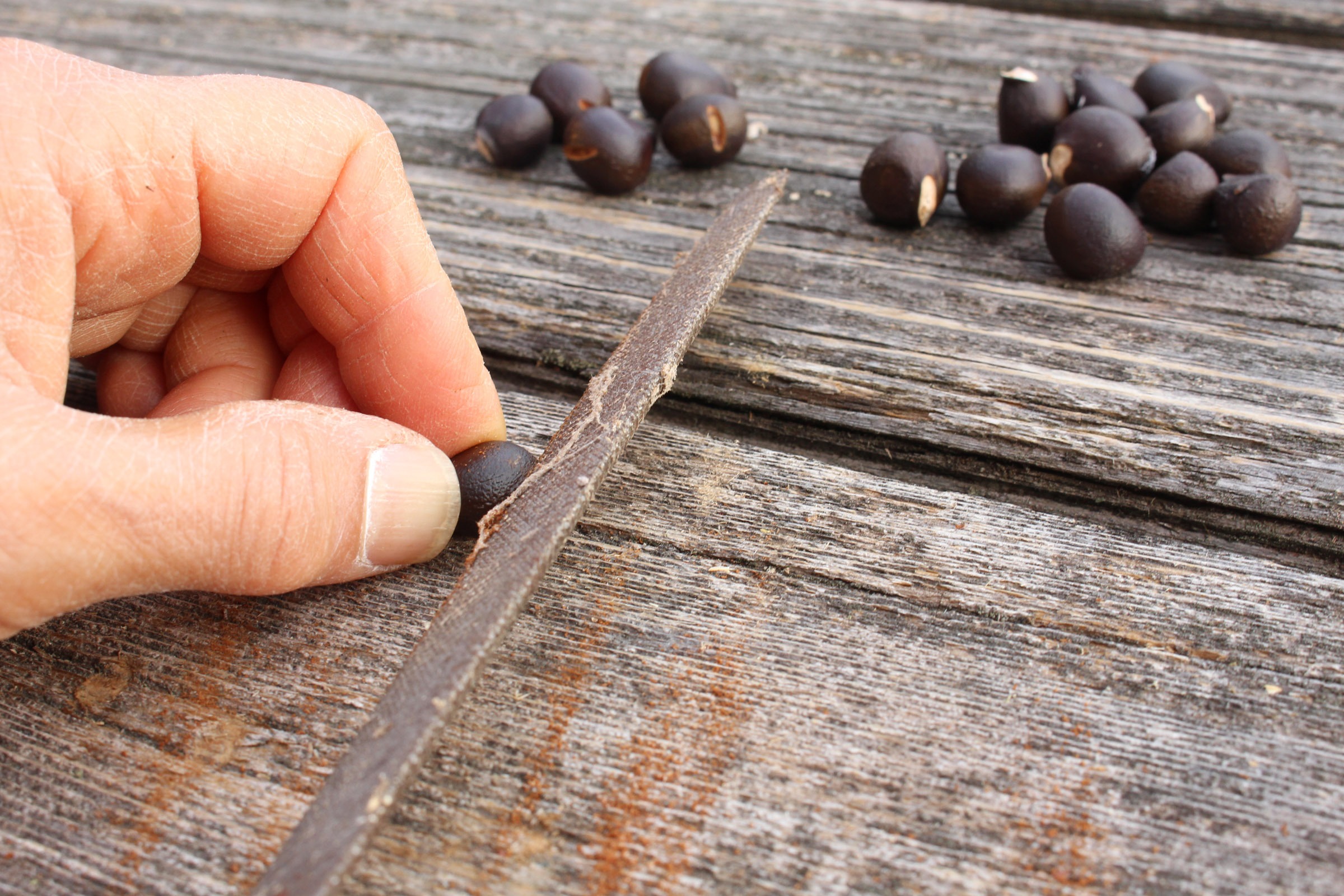
Some seeds — tree peonies, for instance — have a double dormancy, one for the roots and one for the shoots. In this case, a warm moist period, again for about two months, is needed for the roots to come alive and grow, and then the cool, moist period is needed to break shoot dormancy.
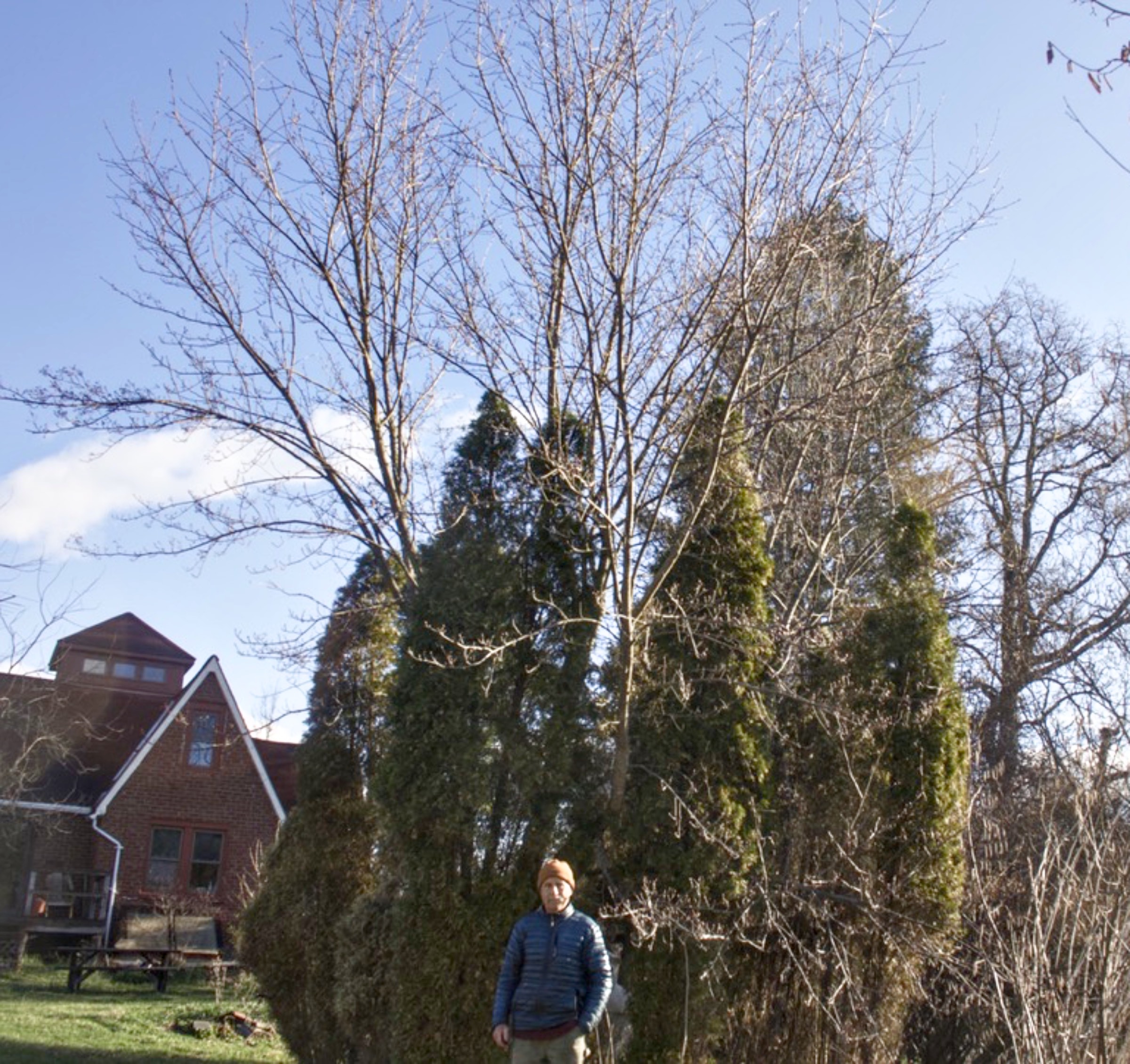
Korean Mountainash today, grown from seed planted in 2006
You may wonder why I’m writing about this now, in spring. Well, some trees ripen seeds in spring and can be planted for immediate germination and growth. And they need, in fact, to be planted very soon after they drop or they lose their ability to grow.
I was recently admiring my 2-year-old seedlings of red maple. They now stand about 5 feet high but would be taller if they hadn’t had growth restricted by growing in a pot their first couple of years. I finally figured out where to plant them and they are doing well, thank you, in the ground. Red maples are pretty trees, fast growing, and can be tapped for maple sap. Seeds will be dropping in a few weeks; I recommend planting a few.
Other common trees with seeds ripening in spring are elm, silver maple, cottonwood, willow.
Fun, and More
An advantage and a disadvantage of seed grown plants is that they aren’t replicas of their mothers. The advantage is their genetic diversity; should a fatal disease strike, some of the progeny might be able to resist it. The disadvantage of their diversity is that if you love the way the mother plant tree looks or the taste of its fruit, the progeny won’t necessarily show those traits.
If that seed I planted from the McIntosh apple had grown to maturity, fruit on that offspring would not be McIntosh and would likely be inferior to it. Apple breeders figure that there is a one in ten-thousand chance of a seed from a good-tasting apple tasting at least as good as that of the mother tree. Not that it doesn’t happen, though. Empire apple was the result of a cross between Red Delicious and McIntosh. The seedling was one of thousands grown at Cornell University’s Geneva station in 1945. It was deemed tasty (I don’t like it) and is now a commercial variety. Peaches, because they self-pollinate, often yields fruit as good or better than the mother plant from which the fruit was picked.
I feel seedlings are worth planting especially for the satisfaction they provide, increasing over the years. Before planting a seedling tree in its permanent location, I try to picture the plant thirty years hence. That special affection you can develop for a tree raised from a seed can it especially hard to cut it down, even if it is in the wrong place.
“Tall oaks from little acorns grow.” Likewise for maples, sycamores, junipers, and others.
(In addition to collecting seed myself from local trees, I turn to www.jlhudsonseeds.net for more obscure tree and shrub seed,
My own book, The Ever Curious Gardener, offers more details and techniques for growing a wide variety of plants from seed. Charles Heuser by Michael Dirr offer specific propagation details for many trees and shrubs in The Reference Manual of Woody Plant Propagation.)


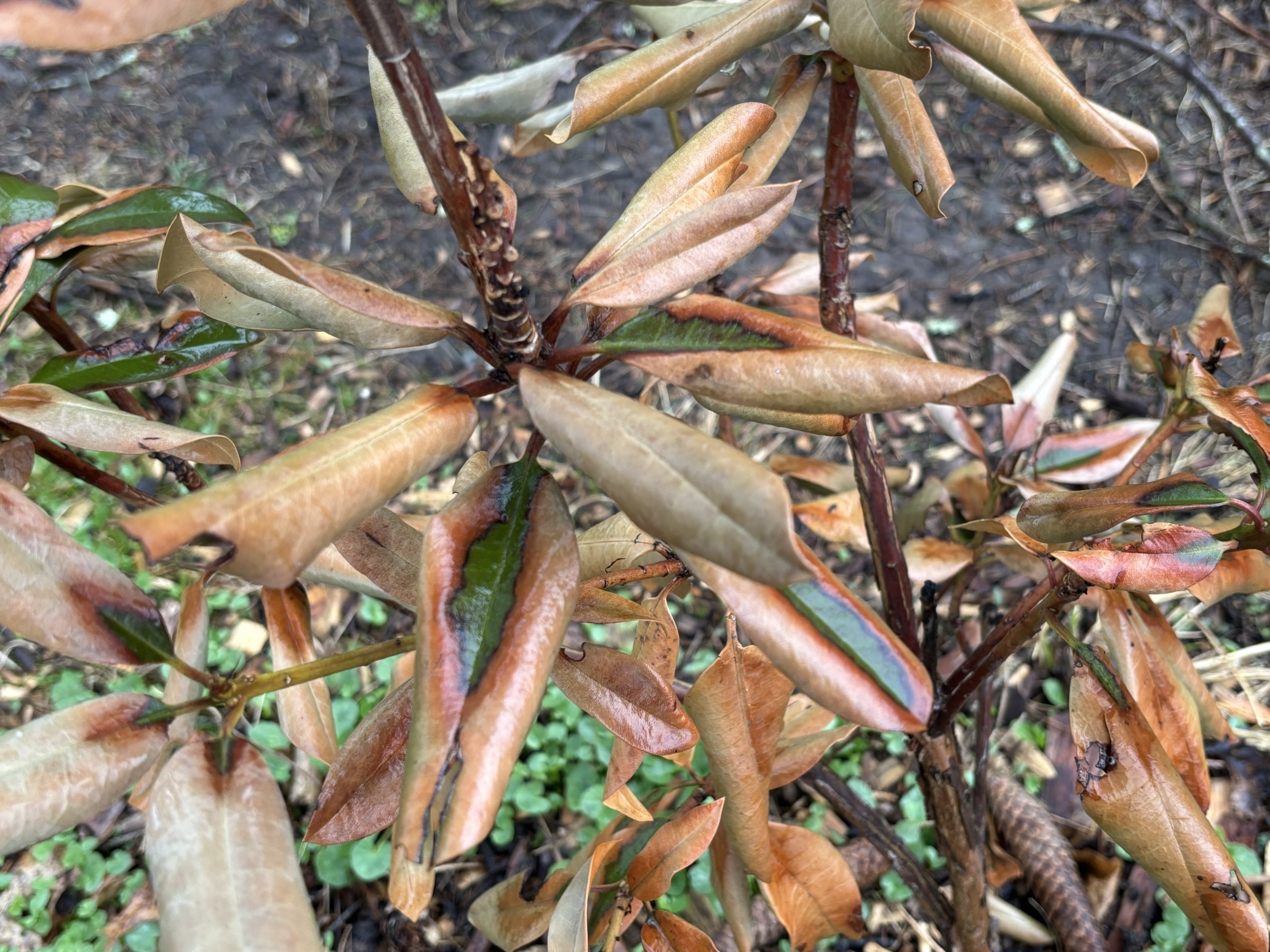
I have bonsai, some quite old. When I was in Quebec last year, I brought back 3 little cedar seedlings that appear to have survived winter.
When I visited Port Townsend, in WA, almost 6 years ago, I took a little Pacific Red cedar on the plane w/me. I eventually put it in a 1-gal pot, saw that this tree just wanted to be BIG – not a suitable specimen for a bonsai. I had cut off the leader, and the next sideways branch below, started straightening up to become the new leader. I really don’t have a permanent place for such a big tree in my yard. For now, it’s still in the 1 gallon pot, and I’m hoping that that
alone will somewhat curb the nature of the tree.
Annual root and shoot pruning should be able to keep it to whatever size you want.